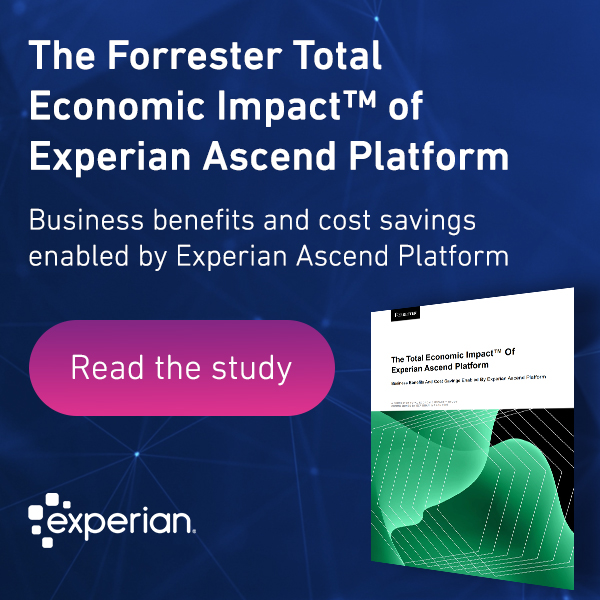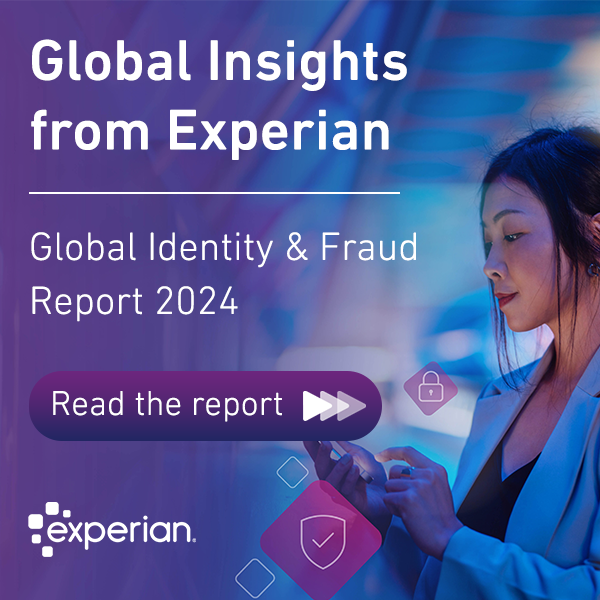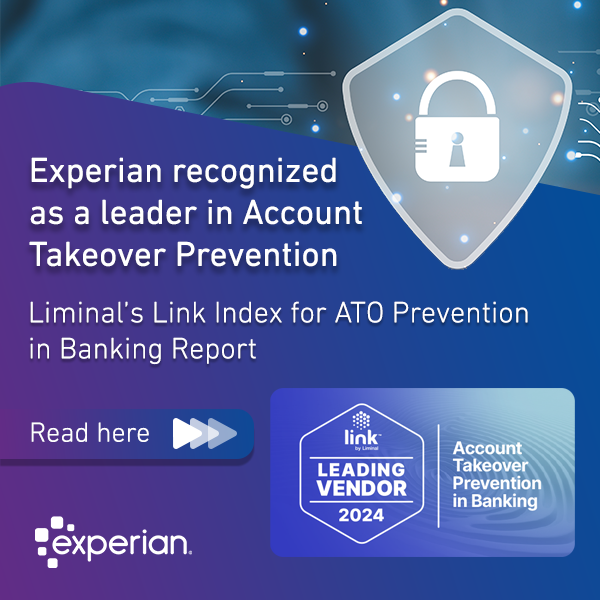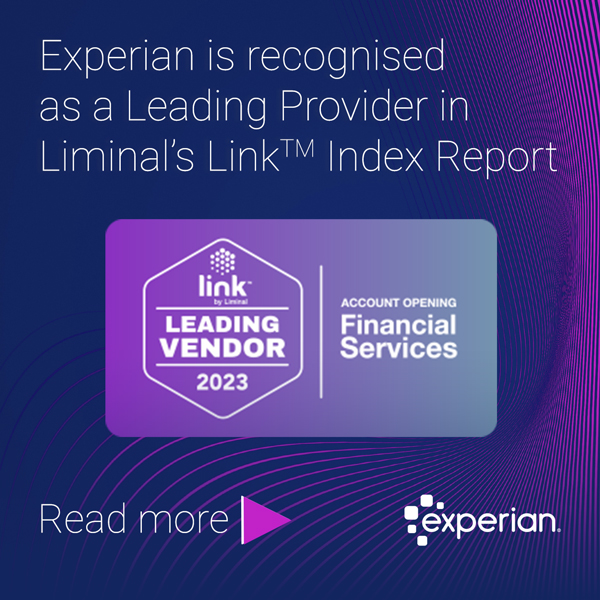Monthly Archives: September 2020

In case you’ve missed these September headlines, we’ve compiled the top global news you need to stay in-the-know on the latest hot topics and insights from our experts. Transforming analytics into business impact CIO.com shares insight on using analytics to maximize business outcomes from IT leaders, including Shri Santhanam, Executive Vice President and General Manager of Global Analytics and AI. Global shudder: How businesses and customers are reacting to Covid-19 This MediaPost article covers global research findings on the impact of the Covid-19 pandemic, as well as perspective on the trends and what’s to come, from Steve Wagner, Global Managing Director of Decision Analytics. Experian touts Biocatch behavioral biometrics, adds Onfido face authentication for onboarding Biometric Update shares the latest on enhanced fraud detection for new account openings through a layered approach. Marika Vilen, SVP Platform Commercialization, Global Identity and Fraud, speaks to optimizing operations in today’s environment. Experian’s cloud-based solutions adapt to today’s evolving customer needs In this AiThority article covering cloud-based solutions for automating decisions, Donna DePasquale, General Manager, Executive Vice President of Global Decisioning, shares her perspective on businesses meeting the needs of today’s changing market. Why businesses need to meet the challenge of digital acceleration Steve Pulley, Managing Director of Data Analytics, offers global insights on continuing operations through an evolving digital marketplace impacted by Covid-19 in this Bdaily, United Kingdom, article. Stay in the know with our latest insights:

Whether you work for a small or big company, chances are you’ve seen budgets contract in the wake of Covid-19. There are a lot of factors contributing to it: fluctuating economic outlooks, building up loan loss reserves, and re-directing expenditures to keep employees and customers safe and secure. A recent global study of banks and retailers found that the top area of short-term investment was securing the mobile and digital channels. In fact, it also showed that 80% of businesses put a digital identity strategy in place, a 30-point increase since Covid-19 began and 60% of businesses are planning to increase their budgets for credit risk analytics and fraud prevention, respectively. So why is it that only 32% of banks and retailers feel operationally ready for their customer’s continued demand for digital engagement? The Capex required to invest in new technology these days requires a fiercely competitive business case. Not forgetting to mention, if approved, it could be a while before you see a return on your investment. But it doesn’t mean the latest advancements and innovation available for managing credit risk or fraud risk is out of reach. Getting more out of your existing tools and technologies is easier to implement and quick to deliver results. In fact, since Covid-19 began, hundreds of clients have optimized their use of credit and fraud risk software and analytics, helping them focus on creating more meaningful customer relationships and saving them millions in potential losses. Here are two examples of how you can get the most out of your existing technologies today and a checklist for evaluating your current tools. Device recognition Beyond securing systems against Cybersecurity threats, businesses need to think like the criminals they’re trying to deflect. If it seems like the world all went digital overnight because of Covid-19, then you can bet fraudsters were one step ahead exploiting the blind spots in the customer relationships you quickly moved online. But how do you recognize your customer behind their mobile device or computer screen? One way is to discern a fraudulent (or “mimic”) device from a genuine one. Having access to this information allows you to swiftly see the same device repeating both good and bad behavior and thus have a better chance of isolating the mimic device and mitigating fraud attacks. This is done by creating a strong probabilistic measure to determine whether two events are from the same device or not. How does this help? It helps to reduce over-firing fraud velocity rules and more precisely out-sort fraud events for manual review. It’s not as complicated as it sounds, and many businesses already have access to this device intelligence data which simply requires them to either turn it on or upgrade their fraud management systems to its latest version. In fact, additional device data points are always being added, and upgrading this layer is often recommended as it can provide up to 85% improvement in performance. Bottom-line: Device data bolster the effectiveness of your customer identity and fraud defenses with little impact on operational resources and reduces friction on your customer’s digital experience. Machine learning Innovations in decision management are having an impact on areas traditionally associated with predicting consumer behavior, such as credit risk, collections, and fraud detection. The ubiquity of data nowadays requires the methods used to derive actionable insights to evolve and most lenders globally have started to adopt advanced analytics. Nearly 70% of businesses increasing their use of machine learning for determining creditworthiness since Covid-19 began. For the collections process, it has helped to determine the best way to contact a delinquent customer or the best treatment to use as a customer exits Covid-induced forbearance? For card, mortgage, and automotive portfolios, machine learning has played a strategic role in creating and implementing pricing strategies to determine the most accurate decisions for financing terms. Perhaps it’s in fraud detection where machine learning is having the biggest impact. Unlike how it’s applied in credit risk decision strategies, machine learning used for fraud detection can be trained to learn and improve with experience without explicitly being told to do so. It excels at solving problems where the “problem space” cannot be defined easily by rules, which makes it a great complement to mature rules-based fraud management systems. Furthermore, machine learning models can take advantage of the different data points from all backing applications at the time of any single transaction, login, or submission. This produces a final decision that’s more accurate than that produced by a simple rules-based approach or manual decision matrix. Attributes that once provided minimal lift when analyzed in a silo may now provide a substantial lift to predict credit risk or prevent a fraud attack when combined with multiple data elements. Conversely, legitimate events that were inadvertently triggered by traditional fraud detection methods can be identified as authentic before having a negative impact on the customer’s experience. Bottom-line: A layered approach continues to be a key component in any credit decision or fraud detection solution and machine-learning models are the final call in your decision workflow strategy so they can leverage all the previous decision data. Checklist: Evaluate whether you’re getting the most from your decision technology Is your current solution providing the results you need? Avoid comfort in patterns and request a business review of your current solution to analyze performance. It may reveal unknown gaps and opportunities to improve your business results. How do your results compare to your peers? Some peer benchmarking is publicly available, but most vendors offer peer (blind) benchmarking using your specific performance data. It’s worth the ask! Are you using all the functionality your tool has to offer? Sometimes decision technology is implemented with a myopic focus on solving a specific problem or used in a specific area despite a broad range of functionality available that covers more use cases. Are you using the most up-to-date version of your tools? Check with your vendor right away and stay informed regarding newer versions. Upgrades generally require less effort and cost than a new solution and by continuously monitoring for the latest version, you’re able to meet current regulatory and policy standards. Are there any ‘add-ons’ available? Your existing decision technology may offer add-ons to enhance your current solution. Add-ons such as new or enriched data sets, updated scores or models or new software features may extend the business usage of a solution to different processes and within additional departments. Are your technologies integrated to enhance your credit risk and fraud risk decision workflow? Integrating your technologies can help you to execute credit and fraud strategies seamlessly with less chance for error, manual intervention, or duplicating actions across disparate systems. Technology is critical in meeting customer demand and staying competitive in any market. It can help balance the demand for internal resources while providing the service your customers deserve. But as organizations look to stay competitive, and agile through a volatile economic time, remember the importance and tangible benefits of optimizing what you already have in place. Related articles: Global research study: The impact of Covid-19 on consumer behaviors and business strategies Podcast: Banking trends and opportunities in the post-Covid-19 era Are traditional online identification methods becoming obsolete? Case study: Layered behavioral biometrics, device intelligence and machine learning

In this episode of the Insights in Action podcast we speak with David Bernard, Senior Vice President of Global Marketing and Strategy, about managing digital transformation in the face of unprecedented challenges such as those originated by the global Covid-19 (Coronavirus) pandemic. While the internet has long been a lifeline, technology companies now appear to be the backbone of a global virtual working and collaboration scheme on a scale never experienced before. David shares his perspective on: How business leaders can help accommodate system stressors caused by evolving needs What actions and technologies can help accelerate or scale digitalization efforts Shifting to the cloud without rushing key strategic decisions Managing virtual teams "There’s a lot of comfort as a leader in seeing a solution that works — even if it’s not completely very sophisticated, and building in a Covid time — rather than doing a big ‘what’s it for’ project to design something from scratch and having a long project before implementing something that has all the bells and whistles. So, it leads to a demand for what I would call more software-as-a-service (SaaS) packages and more pre-configured solutions than the highly configurable world that we have seen in the past." - David Bernard >> Listen now to the full episode of this Insights in Action podcast

To keep you informed, we’ve gathered the top global, August headlines covering the latest insights from our experts and recent hot topics. Email attack type: Account takeoverZDNet Japan covers ATO (account takeover) fraud and the variety of techniques used in this attack type to access user accounts and ultimately steal money or sensitive information. In today’s rapidly changing economy, businesses need to get consumer recognition rightDavid Britton, VP of Global Identity & Fraud, shares insights on the disparity between businesses' confidence in recognizing consumers and consumers' lower confidence in this capability by these businesses. EDBI invests in fraud protection fintech VestaThe Straits Times, Singapore, provides an overview of this investment, including details around the increase in online fraud losses recognized across the Asia Pacific (APAC). How banks can balance UX and security amid a pandemicThis Forbes article explores the impact of Covid-19 on consumers, including the critical need for banks to balance consumer protection and good user experience. Stay in the know with our latest insights:

It was Dr. Simon Ramo’s vision of a ‘cashless society’, made possible by information and technology, that led to the creation of Experian’s business in the U.S. in the 1960s. He could see how information was going to change the way people lived and envisioned a future where systems would enable the rapid transfer of information to establish patterns of payment and individual creditworthiness. The democratization of digital financial tools and initiatives to improve financial literacy can create promising beginnings for countless disadvantaged individuals. Fast-forward to the present, and the global Covid-19 (Coronavirus) pandemic has taken the world by storm, proving a catalyst for an accelerated path towards a cashless society. Our recent proprietary research indicates that: Since Covid-19, we’ve seen growth in the use of mobile wallets (+8%), such as Apple Pay, and retail apps (+6%), such as Starbucks. The largest areas of growth for using digital payment methods are online grocery shopping (+7% increase) and ordering food (+6%). 50% of consumers globally intend to increase their online activities (banking, payments and shopping) in the next 12-months. Over the past decades, many developing countries such as India and China have recognized the value digital payments deliver to communities. Those governments are fully invested in their cashless society initiatives with a view to increase financial inclusion, improve security, boost trust online, and leverage their high mobile penetration rates to expand the adoption of mobile payments and services. A cashless society brings greater visibility into a larger number of transactions, reducing the potential risk of money laundering, bribery and corruption. It also allows central banks to have a more accurate view into how much money is in circulation, helping them prevent cash hoarding. On the other hand, businesses don’t need to maintain cash reserves, bank their cash payments or pay bank charges for withdrawing physical currency, which means that less ATMs to service and less cash to process leads to more resources to put at the service of their customers. More about our research From June 30 – July 7, 2020, we commissioned an independent research firm to survey consumers and businesses in 10 countries worldwide to understand the impact of Covid-19 on changing consumer trends and behaviors and business strategies and operations. >> See New global research insights: The impact of Covid-19 on consumer behaviors and business strategies for more insights from this study




